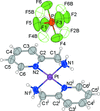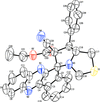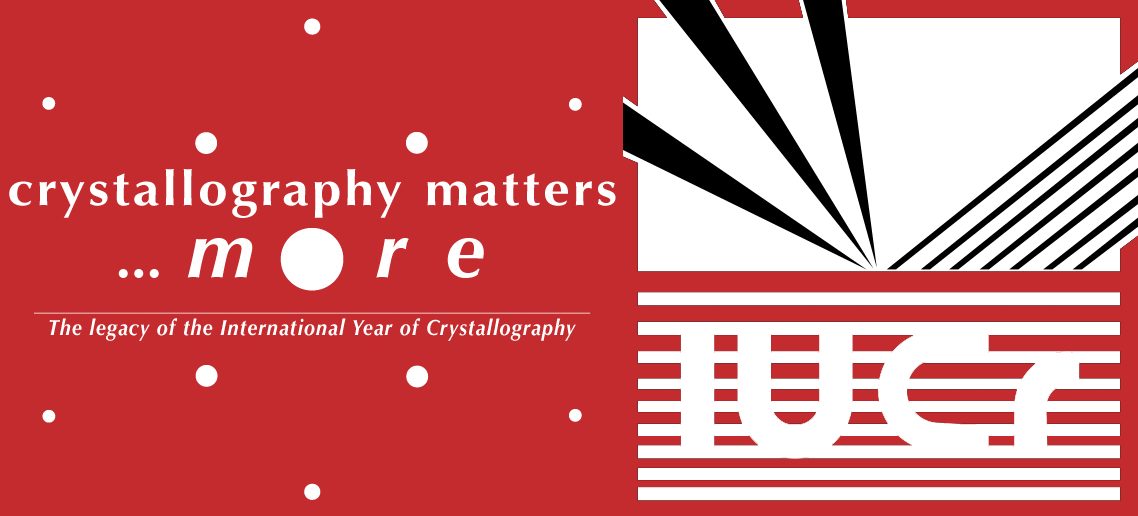issue contents
September 2018 issue

Cover illustration: Re-refinement of the crystal structure against the original X-ray intensity data after correct placement of the donor H atoms proves that `bis glycine' squaric acid is in fact the previously reported diglycinium squarate. See: Seidel [IUCrData (2017). 3, x181324].
metal-organic compounds
Download citation


Download citation


Open  access
access
 access
accessThe crystal structure of the title salt is composed of alternating rows of bis(2-(aminomethyl)pyridine-κ2N,N′)platinum(II) cations and hexafluoridophosphate anions.
CCDC reference: 1864971
Download citation


Download citation


Open  access
access
 access
accessThe central ZnII cation has a distorted tetragonal N2O2 coordination sphere defined by two monodentate p-chlorophenoxyacetate ligands and a chelating ethylenediamine ligand.
CCDC reference: 1865841
Download citation


Download citation


Open  access
access
 access
accessThe title compound, is a cobalt(III) dibromide complex having two (ethylene-1,2-diamine) ligands coordinating cis to each other.
CCDC reference: 1867356
organic compounds
Download citation


Download citation


Open  access
access
 access
accessThe asymmetric unit of the compound contains two independent molecules with different orientations about the hydrazone bond. The molecular packing features N—H⋯O hydrogen bonds that lead to a twisted supramolecular chain along the b-axis direction.
CCDC reference: 1859548
Download citation


Download citation


Open  access
access
 access
accessThe asymmetric unit of the title compound comprises one half-molecule, the other half being generated by a center of inversion. The piperidine ring adopts a chair conformation. A short intramolecular C—H⋯N hydrogen bond stabilizes the molecule and forms an S(6) motif.
CCDC reference: 943697
Download citation


Download citation


Open  access
access
 access
accessThe synthesis and crystal structure of a biologically important pharmacophore containing flavone is reported.
CCDC reference: 1866882
Download citation


Download citation


Open  access
access
 access
accessIn the title compound, the seven-membered ring has a twisted envelope conformation and the saturated six-membered ring a chair conformation. In the crystal, N—H⋯O, N—H⋯S, O—H⋯S hydrogen bonds and C—H⋯π interactions link both main and solvent molecules into layers lying parallel to (101).
CCDC reference: 1866809
Download citation


Download citation


Open  access
access
 access
accessThe (dimethylamino)phenyl ring and the chromanone ring system are linked via an α-β unsaturated carbon bridge. The dihedral angle between the two terminal phenyl rings is 29.66 (6)°. The tetrahydro-4H-pyran-4 one ring in the chromanone moiety adopts a sofa conformation.
CCDC reference: 1846995
Download citation


Download citation


Open  access
access
 access
accessThe indene and thiazole rings adopt an envelope conformation while the pyrrole ring adopts a twisted conformation. The crystal structure is stabilized by intermolecular C—H⋯·O and C—H⋯·N hydrogen bonds.
CCDC reference: 1867229
Download citation


Download citation


Open  access
access
 access
accessThe synthesis and crystal structure of a biologically important pharmacophore containing flavonol is reported.
CCDC reference: 1868441
Download citation


Download citation


Open  access
access
 access
accessThe fused ring system in 8,9-dimethoxybenzo[b]naphtho[2,3-d]thiophene is almost planar.
CCDC reference: 1590246
Download citation


Download citation


Open  access
access
 access
accessThe fused triazolopyrimidine ring system of the title molecule is planar with the pent-4-enoate substituent nearly orthogonal to it. In the crystal, inversion-related C—H⋯O hydrogen bonds form dimers which are linked into chains extending along the a-axis direction by inversion-related C—H⋯π(ring) interactions.
CCDC reference: 1866951
Download citation


Download citation


Open  access
access
 access
accessThe morpholine ring of the title compound adopts a chair conformation with the exocyclic N—C bond in an equatorial orientation.
CCDC reference: 1860342
Download citation


Download citation


Open  access
access
 access
accessThe crystal structure of C27H22N4O2 is characterized by N—H⋯N hydrogen bonds connecting the molecules into zigzag chains running along the b-axis direction.
CCDC reference: 1576945
Download citation


Download citation


Open  access
access
 access
accessRe-refinement of the crystal structure against the original diffraction data after correct H-atom placement proves that `bis glycine' squaric acid is in fact the previously reported diglycinium squarate.
CCDC reference: 1832495
Download citation


Download citation


Open  access
access
 access
accessThe title compound, C6H10N3O2+·I−, contains a protonated L-histidine molecule as cation and an iodine anion. The crystal packing is controlled by intermolecular N—H⋯O and N—H⋯I hydrogen bonds.
CCDC reference: 1865975
Download citation


Download citation


Open  access
access
 access
accessThe crystal structure the title compound has a two-dimensional layer structure.
CCDC reference: 1868352
Download citation


Download citation


Open  access
access
 access
accessThe title compound crystallizes in two-dimensional sheets in which 2-(pentyloxy)dibenzo[b,d]furan molecules are arranged in a head-to-head and tail-to-tail fashion that enables hydrophobic interactions between fully extended 2-pentoxy chains and π–π stacking between dibenzofuran rings in adjacent rings.
CCDC reference: 1867924
Download citation


Download citation


Open  access
access
 access
accessThree independent but conformationally similar molecules, showing intramolecular N—H⋯O hydrogen-bonded ring formation, are present in the asymmetric unit. In the crystal, C—H⋯O interactions give rise to a supramolecular sheet structure.
CCDC reference: 1868829


 journal menu
journal menu






























![[publCIF]](/logos/authorchecklist11.gif)





